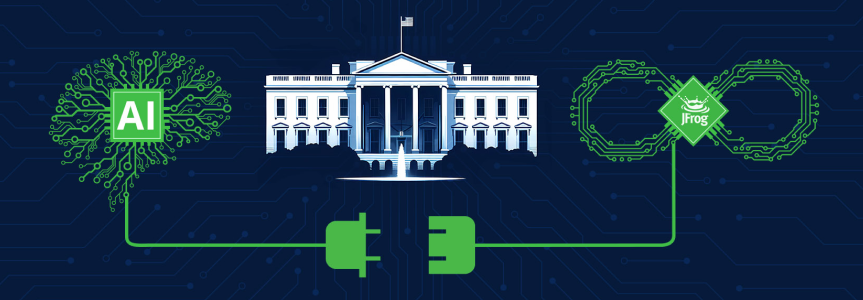Navigating AI’s New Horizons: Empowering AI Model Development, Security and Compliance
While AI shows great promise to improve efficiency, governments are legislating monitoring and control requirements to protect against security risks and vulnerabilities
The Wake-Up Call
The rapid rise of artificial intelligence, more specifically, generative AI systems such as OpenAI’s ChatGPT, has simultaneously spurred intense development and concern over the past year.
On the 30th of October, President Joe Biden signed an Executive Order that urges new federal standards for AI development, safety, security, and trustworthiness that also address many other facets of AI risk.
A recently published White House Fact Sheet summarizes critical areas of society that they believe are threatened by AI including: Personal Safety and Security, Privacy, Equality, Protection of Personal Information, Innovation, Competition and Responsible Government Usage.
Most of these issues are related to safeguarding sectors of society subject to the potential negative effects of AI. While this is indeed important to all of us on a macro level, for the ever-increasing number of companies that incorporate AI into their software development programs, it is critical to understand the level of control and governance required in the AI software development process to meet compliance and industry guardrails, including:
- Standards, tools, and tests ensuring AI systems are developed safely and securely
- Requirements for sharing safety test results and other critical information
- Protection against the risks of using AI to engineer harmful applications
- Protection from fraud through standards for AI-generated content detection
- Development of a cybersecurity program to remediate critical vulnerabilities
- A National Security Memorandum on further actions for AI development and security
Currently, these are guardrails that prudent industry leaders, executives, and DevOps professionals realize are precursors to legislation, standards, and regulations that must be met by all companies incorporating AI into their software and hardware solutions.
AI Software Development Practice
As every software development leader and practitioner knows at the core of every AI-enabled application is the model powering it. While the code itself may be manageable, the huge amounts of data required for each model represents both a development operations nightmare and a significant security threat.
At its core, however, AI models are binaries that need to be secured, managed, tracked, and deployed in the same way as quality software applications are produced today. The complexity of AI and the size of its datasets, however, are beyond the capabilities of most of today’s software development environments.
The challenge for most organizations is that AI model development, its governance, and its testing is still a relatively new domain that lacks transparency and integration with broader, more established software development practices. Models containing tens of billions of parameters that were trained on far-ranging data pose a real risk to personal and national security, the economy, public health, and safety.
How the JFrog Platform Provides AI Model Development and Security
The good news for organizations who integrate AI models into their development is that many of the best practices honed in “traditional” software development can be applied to delivering secure and transparent AI models as well. However, this will require organizations to identify DevOps platforms that can bring the security level of their AI development in line with their existing development operations.
The Executive Order suggests that AI developers must share safety data, training information, and reports with the U.S. government before publicly releasing AI models or updated versions of such models.
The JFrog Platform, which includes JFrog Artifactory, is industry-proven, serving millions of developers at over 7,000 customers including over 75% of Fortune 500 companies. The platform’s enhanced visibility into the AI development process captures evidence of all actions and elements that go into creating and updating AI models and corresponding datasets. It also establishes automated policies that allow only models meeting established criteria to advance towards release and distribution.
To comply with the upcoming order, it is critical to have a single source of truth covering the entire software development cycle. The JFrog Platform helps drive best practices across AI teams by bringing together all the components in the software supply chain to trigger automated policies based on data that can be trusted.
AI development teams can gain confidence in their models with continuous, built-in security scanning and signed evidence of every action or change taken against immutable releases.
A good example of the granular information generated by the platform is the Software Bill of Materials (SBOM) which details all the code, dependencies, datasets and artifacts pertaining to particular software packages. This practice is encouraged by US regulators and has been widely adopted by the software development community. Generating an SBOM for an AI Model should not only include all of the elements that make up the model, but also a record of all testing and validations that were performed prior to release.
This is just one of many examples of how the JFrog Platform has the scalability, features and reporting capabilities to provide an efficient, secure and proven environment for safe high-quality AI model development. The JFrog Platform is built for enterprise scale and governance by providing resilience, access controls, security and compliance.
Takeaways
AI is a technology that is transforming every walk of life. It has an unprecedented wide range of possibilities that enables people to rethink how we integrate information, analyze data, and use the resulting insights to improve decision-making.
At JFrog, our mission is to deliver our customers the power to manage, secure, and govern AI models and components with the same confidence they have in their existing development operations.
This is critical not only for AI software development, but also for giving our customers the peace of mind that they have the tools and information necessary to ensure that their AI based applications can meet emerging AI regulatory standards.
In the ever-evolving landscape of artificial intelligence and machine learning, staying ahead of the curve of not only technology but also government oversight and regulations is not just an aspiration – it’s a necessity. Developers worldwide are constantly seeking innovative tools and frameworks that simplify complex tasks, accelerate development, and enhance the performance of AI models.
For more information about the JFrog Platform’s AI Model capabilities, feel free to check out our blog or schedule a demo at your convenience.






